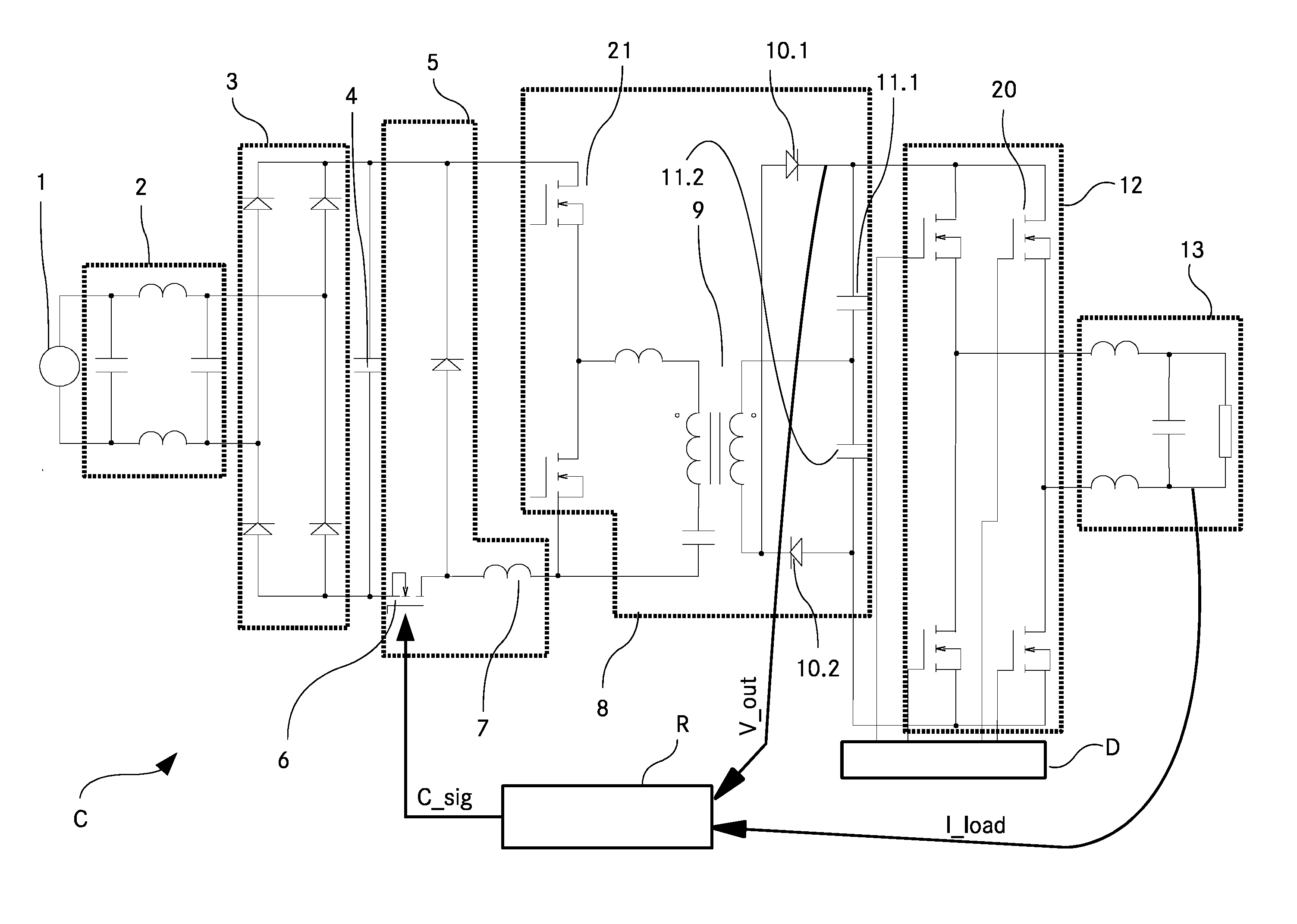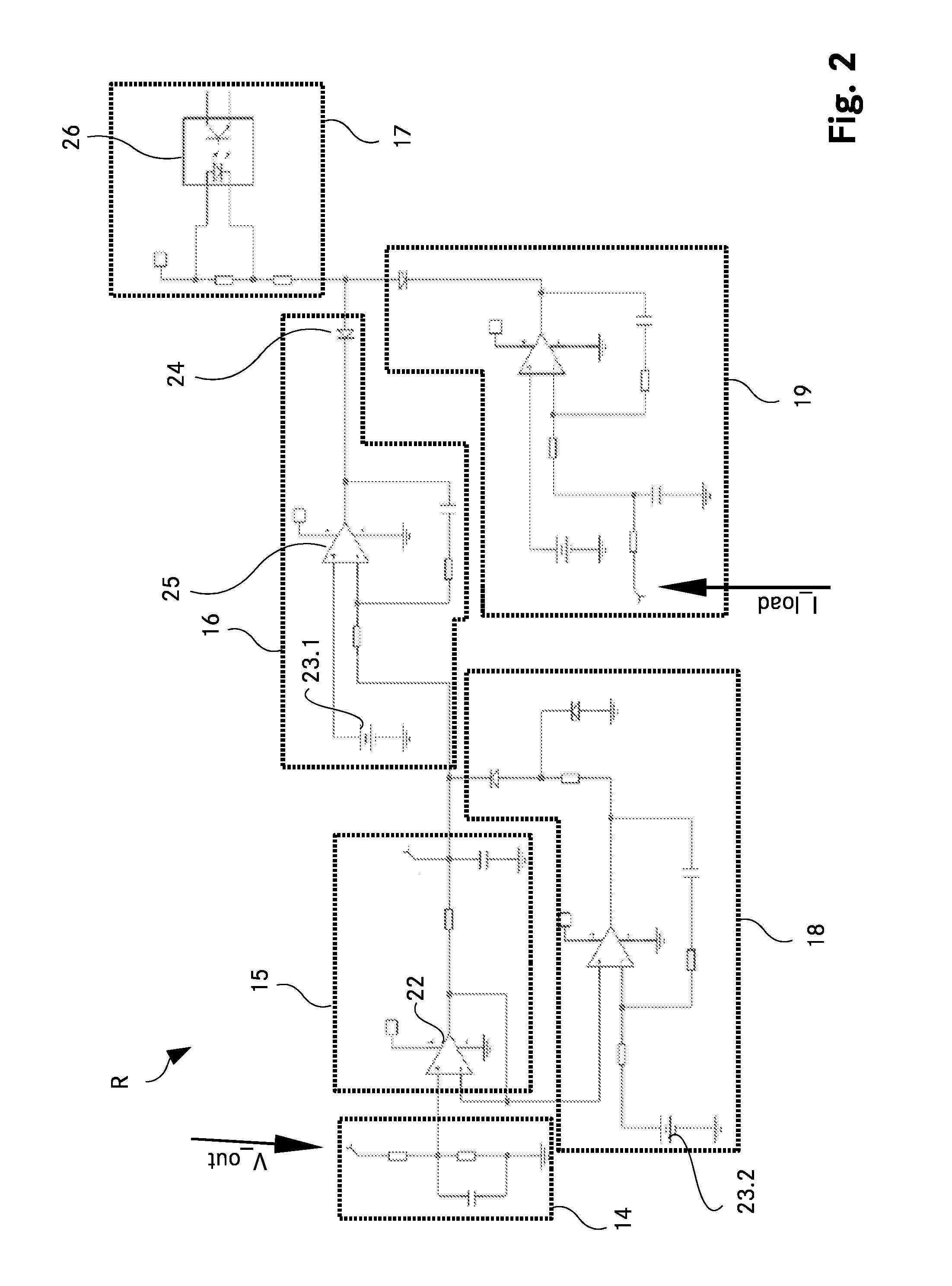Synchronized isolated ac-ac converter with variable regulated output voltage
- Summary
- Abstract
- Description
- Claims
- Application Information
AI Technical Summary
Benefits of technology
Problems solved by technology
Method used
Image
Examples
Embodiment Construction
[0032]FIG. 1 shows a schematic wiring diagram of an AC-AC converter C according to the invention. A utility mains 1 is the power source to the input of the AC-AC converter C. The alternating current supplied by the utility mains 1 is cycled through the low pass filter 2 which serves for filtering electromagnetic interference noise. The utility mains typically has a frequency of 40 Hz to 60 Hz.
[0033]A bridge rectifier 3 after the low pass filter 2 converts the filtered alternating sinusoidal voltage to a unidirectional rectified sine wave. The frequency of this unidirectional rectified sine wave is double the utility mains frequency.
[0034]Connected in parallel with the bridge rectifier 3 is a current supply capacitor 4 which provides the necessary high frequency current for the next stage of the AC-AC converter—the step down converter 5—by providing a continuously flowing input current.
[0035]The step down converter 5 comprises a step down switch 6 in the form of a transistor. The ste...
PUM
 Login to View More
Login to View More Abstract
Description
Claims
Application Information
 Login to View More
Login to View More - R&D
- Intellectual Property
- Life Sciences
- Materials
- Tech Scout
- Unparalleled Data Quality
- Higher Quality Content
- 60% Fewer Hallucinations
Browse by: Latest US Patents, China's latest patents, Technical Efficacy Thesaurus, Application Domain, Technology Topic, Popular Technical Reports.
© 2025 PatSnap. All rights reserved.Legal|Privacy policy|Modern Slavery Act Transparency Statement|Sitemap|About US| Contact US: help@patsnap.com



